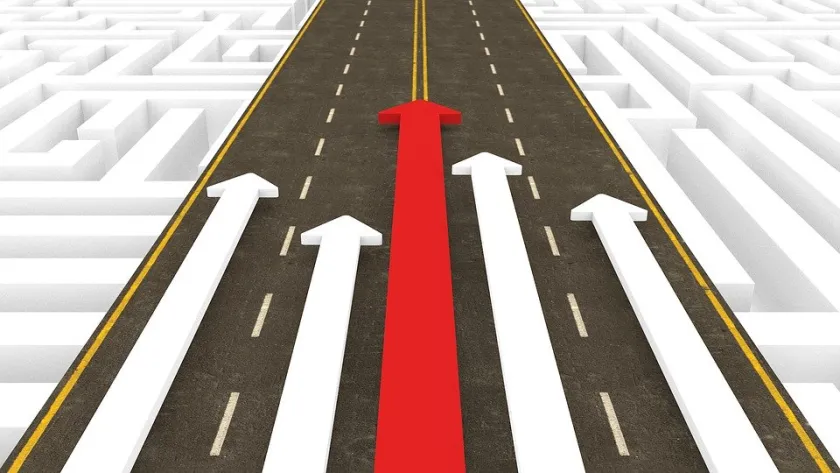Global furniture maker Steelcase has leveraged investments in digital and data-driven insights to respond to the pandemic with agility and a focus on safety. As the COVID-19 pandemic shut down corporate buildings around the world early last year, many wondered whether offices might become obsolete.
Source: Steelcase Reimagines the Office With Digital, Data
But for Steelcase, a leading manufacturer of office furniture, the crisis presented an opportunity to rethink the physical workplace—both for itself and for its partners and clients.
Sara Armbruster was named executive vice president of Steelcase in April 2021 and will become the company’s president and CEO this fall. Back in February 2020, she was serving as vice president of strategy, research, and digital transformation when she was asked to lead the company’s global crisis management response to COVID-19. She believes her diverse experience, including roles in sales, strategy, and IT, provided a broad understanding of Steelcase operations that was key to adapting her leadership and her company’s digital response to the crisis.
“Breadth of background is key to digital transformation, because transformation accelerates the entire business,” Armbruster says. It quickly became apparent that COVID-19, too, would touch every single part of the business; a swift and comprehensive response was necessary. Along with the company’s own strategy and digital metrics, Armbruster began assessing public health information and other external information to help guide safety decisions for 11,900 Steelcase employees.
Adjusting Internally
Despite specializing in office spaces, Steelcase itself adapted quickly to the initial pandemic-driven directives to work from home. The company’s earlier migration to online collaboration tools let employees continue to work and interact seamlessly, Armbruster says. It had also updated and transitioned some more specialized systems to the cloud, enabling global teams to manage critical work, such as product engineering, from home. “We applied Agile development approaches across the business to continue working effectively in this disrupted state,” she says.
With a measured approach guided by public health guidelines, Armbruster and her data team began to consider how to make Steelcase’s workspaces safer in the age of COVID-19. As some employees began returning to offices last summer, Steelcase tracked their unique badge scans and tapped into data from sensors on all spaces and workstations. The team assessed trends in historical office density versus current utilization, enabling a pivot in its own office layouts to provide the necessary environment for social distancing. “We saw the power of using digital capabilities and data science to create new metrics and reports that helped us better protect our employees during this time,” she says.
Human-Centered Design at Work
While adjusting to COVID-19-induced change internally, Steelcase also had to follow fast-changing regulations that affected its business partners across the country, including distribution centers and dealer partners. Data visualization proved key. “Our data scientists used minute-by-minute data to create color-coded heat maps to denote the status of lockdowns, among other information,” Armbruster says. “That helped our leadership team plan strategically and respond more effectively to a host of issues as the pandemic wore on.”
Armbruster and her team also conducted global surveys and other observational research of work-from-home conditions to better grasp emerging paradigms of work, and the company launched a new “Flex” collection to provide more modular options for office furniture. For instance, it developed individual pieces hosted on wheels or casters to foster collaboration while also supporting social distancing and produced portable boundary screens intended to help limit respiratory droplet transmission.
These human-centered design capabilities are critical to Steelcase’s business model, Armbruster says. “The executives we serve believe people will return to the office—it’s a question of when and how. It’s imperative that we’re developing products and furniture to guide them into the future,” she says.
A Testament to Experimentation
The company has also relied on a deep-seated culture of prototyping. Years ago, Steelcase was an early adopter of videoconferencing at scale. Now, internal teams continue to test new workplace tools to determine the optimal experiences for the company’s customers. “A long history of experimentation has given us more freedom to tweak and refine our efforts. We’ll continue to invest in that culture beyond the crisis,” Armbruster says.
As Steelcase sees its digital and data investments paying off, several aspects of the company’s pandemic response are already shaping up to be permanent fixtures, and Armbruster envisions further steps to bolster supply chain technologies and customer interactions.
“We were fortunate to have been consistently making digital investments for years, so we didn’t feel any gap when crisis arrived,” she says. COVID-19 forced Steelcase to rethink safety, factory operations, and liquidity, among other aspects of the business, but it also validated the company’s innovation strategy and helped the organization chart a path for the future. “My job now is to provide support for our people to engage with work at their own pace, while also driving our business forward.”
—by Dr. Gerald C. Kane, professor of information systems and faculty director, the Edmund H. Shea Jr. Center for Entrepreneurship, Carroll School of Management, Boston College; Rich Nanda, principal, Deloitte Consulting LLP; and Anh Nguyen Phillips, senior manager and Global CEO Program research director, Deloitte Touche Tohmatsu Limited
This story is part of a series of conversations with leaders for an upcoming book, “The Transformation Myth,” a collaboration between Deloitte and academics from Boston College and Northwestern University, to be published in 2021 by MIT Press.
Related Content
- Beam Suntory’s Spirited Pivot Toward a New Normal
- Envision Healthcare: On the Front Lines of COVID-19
- Empowered Teams Help CarMax Adapt to Pandemic

